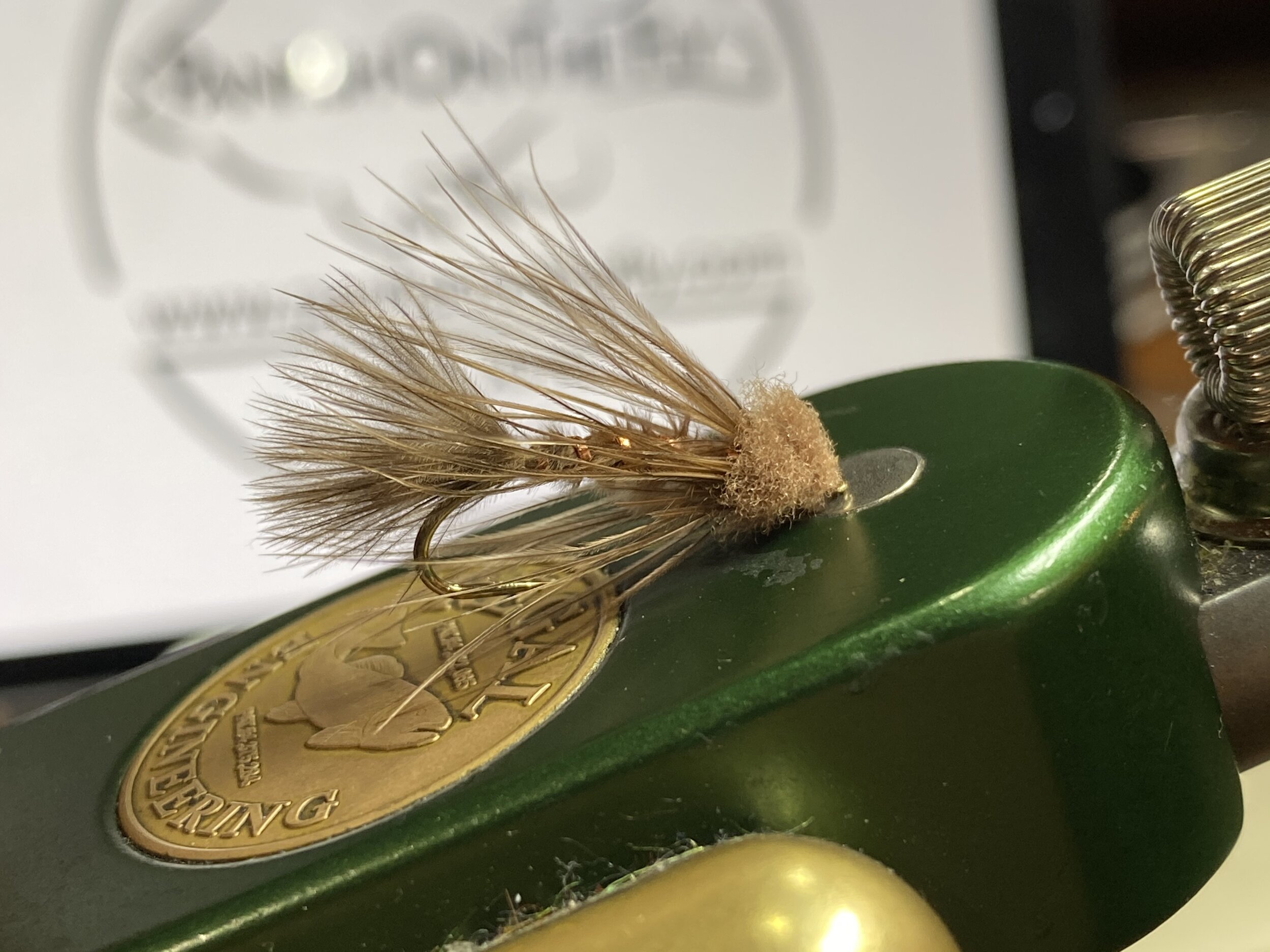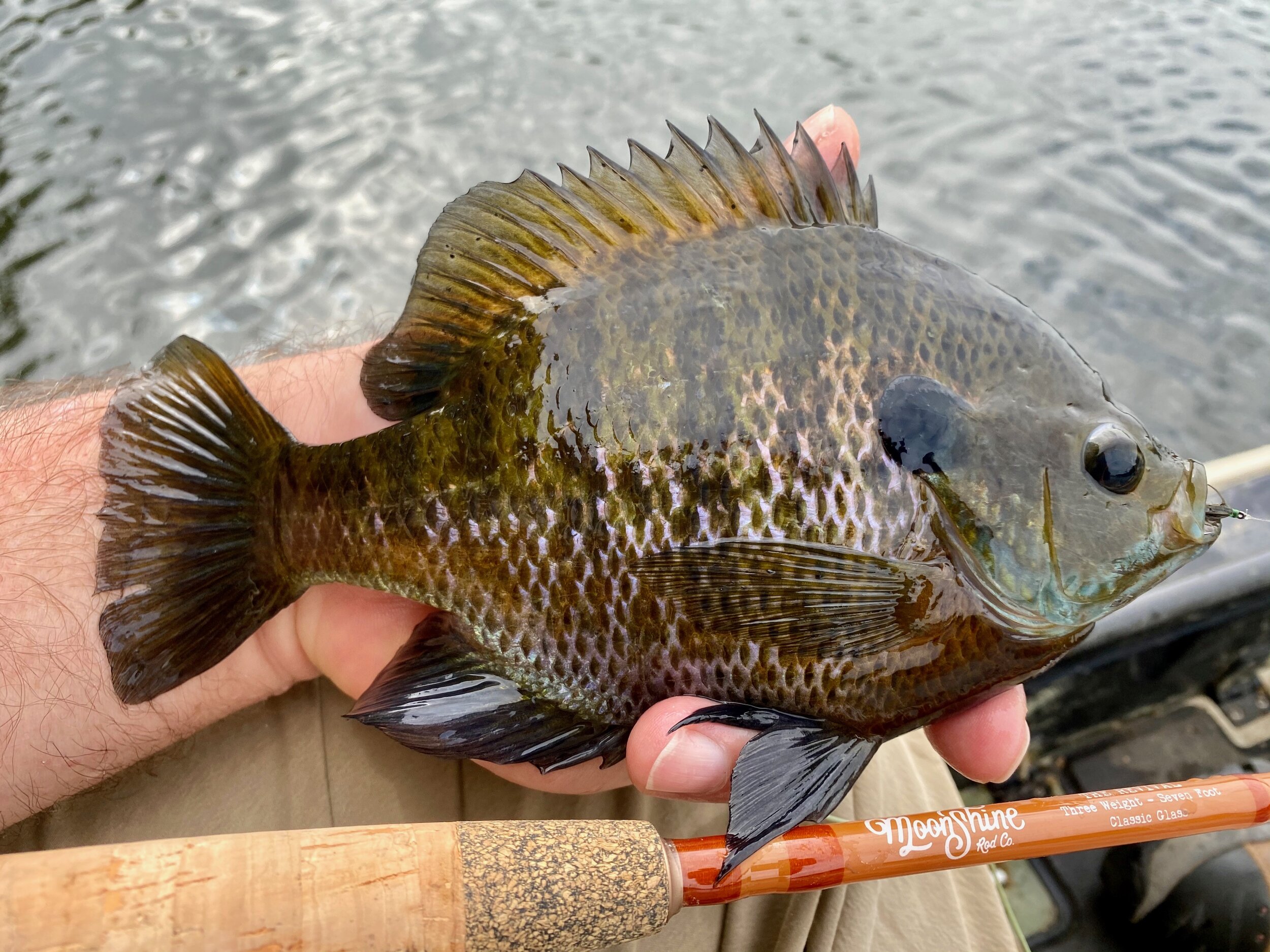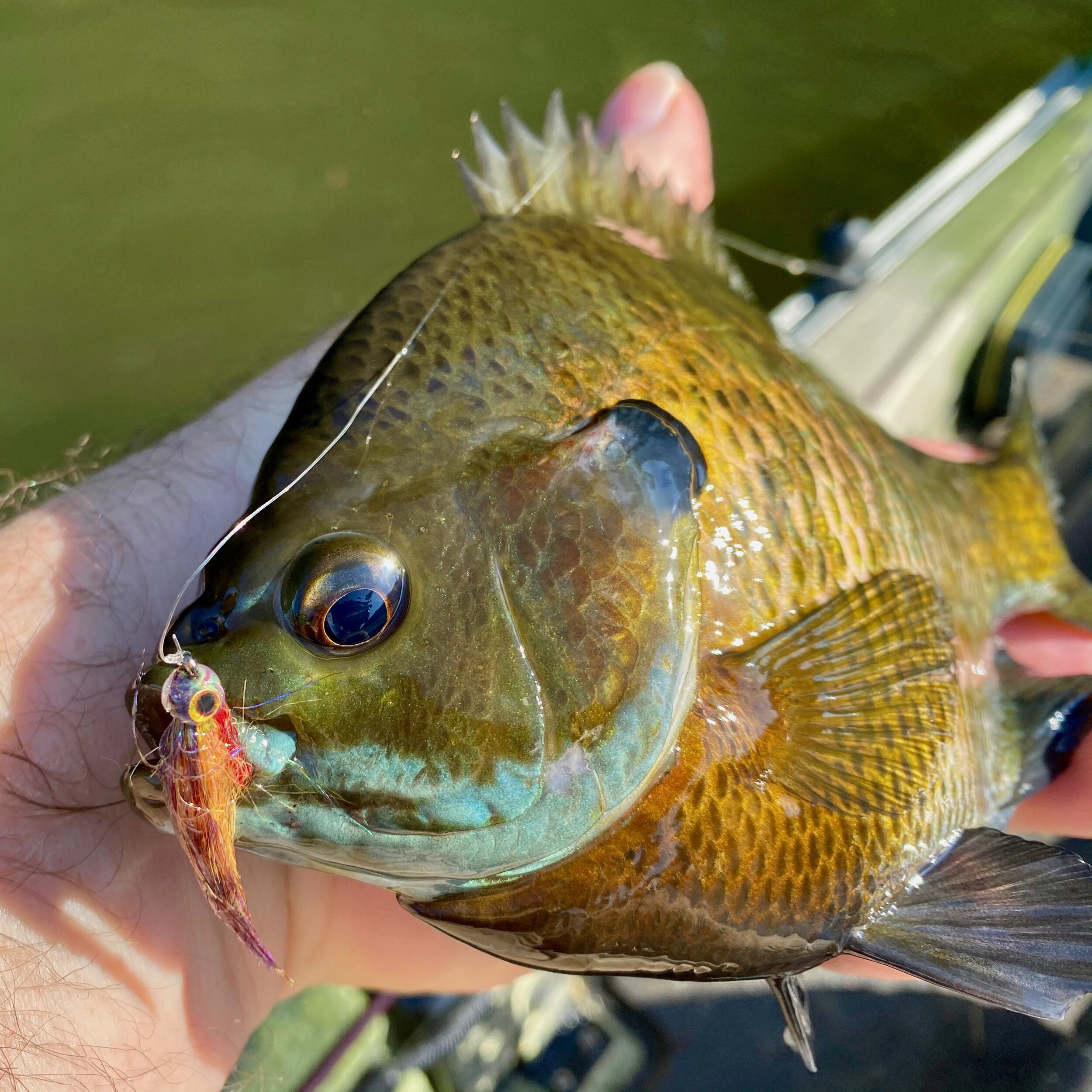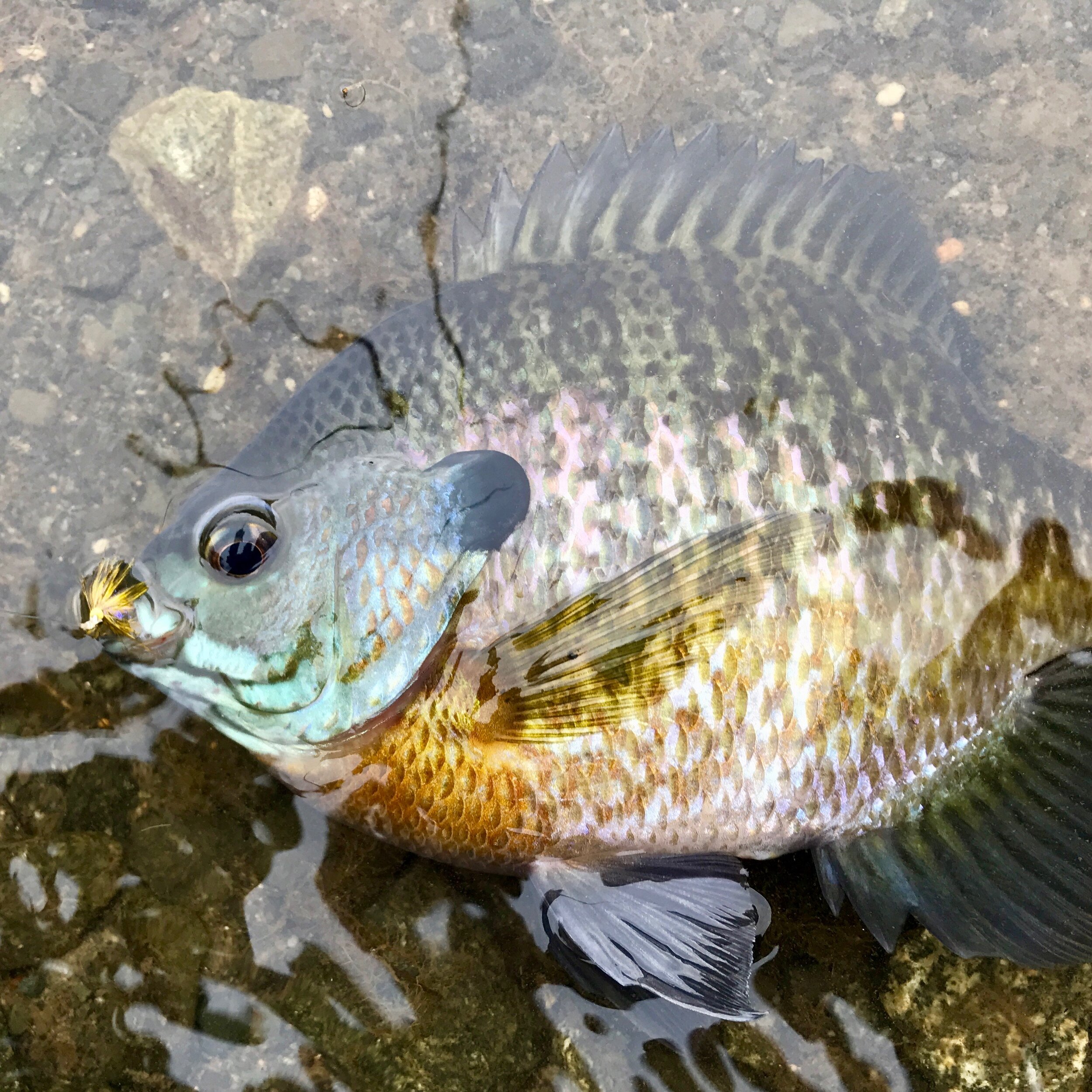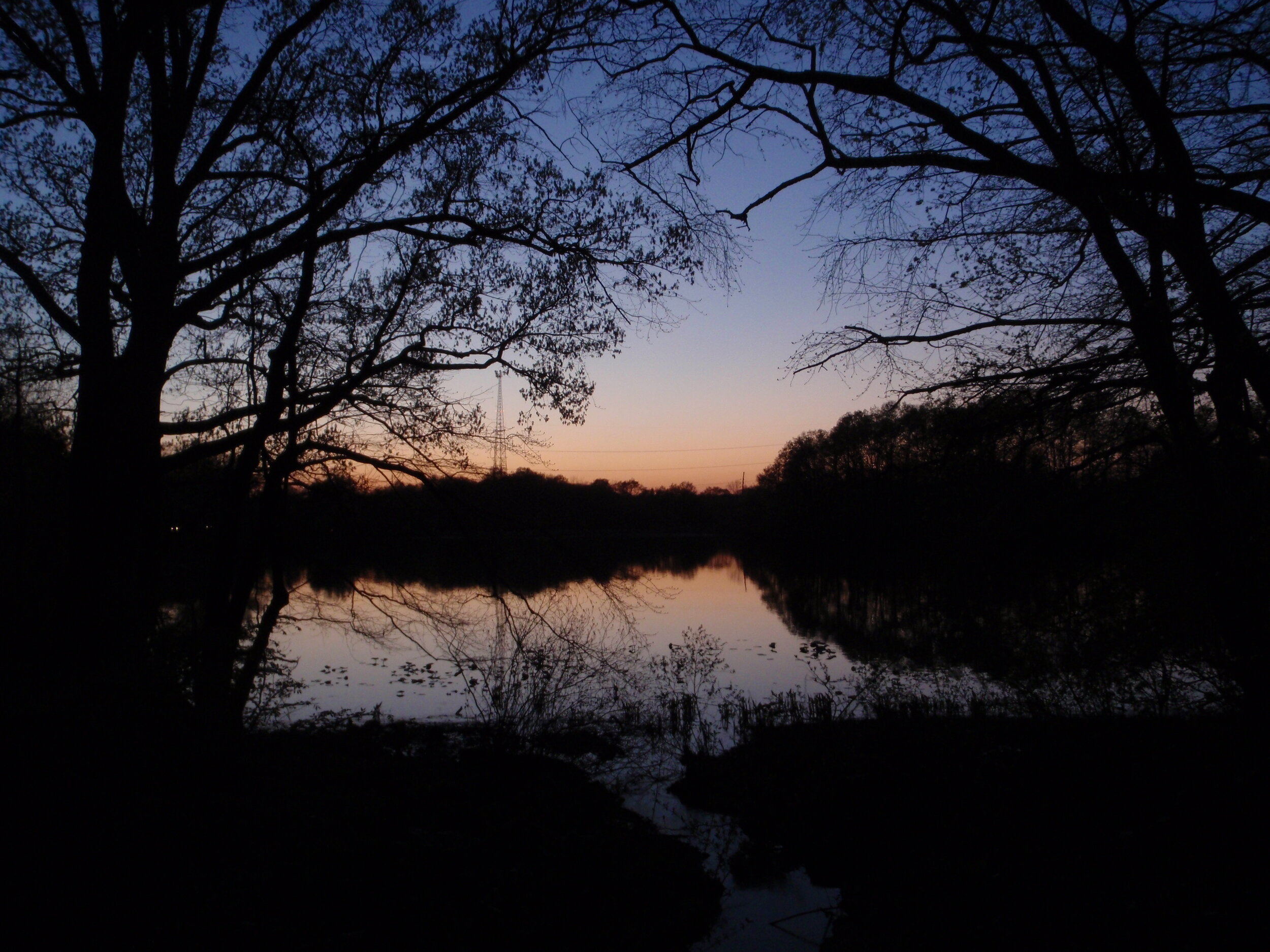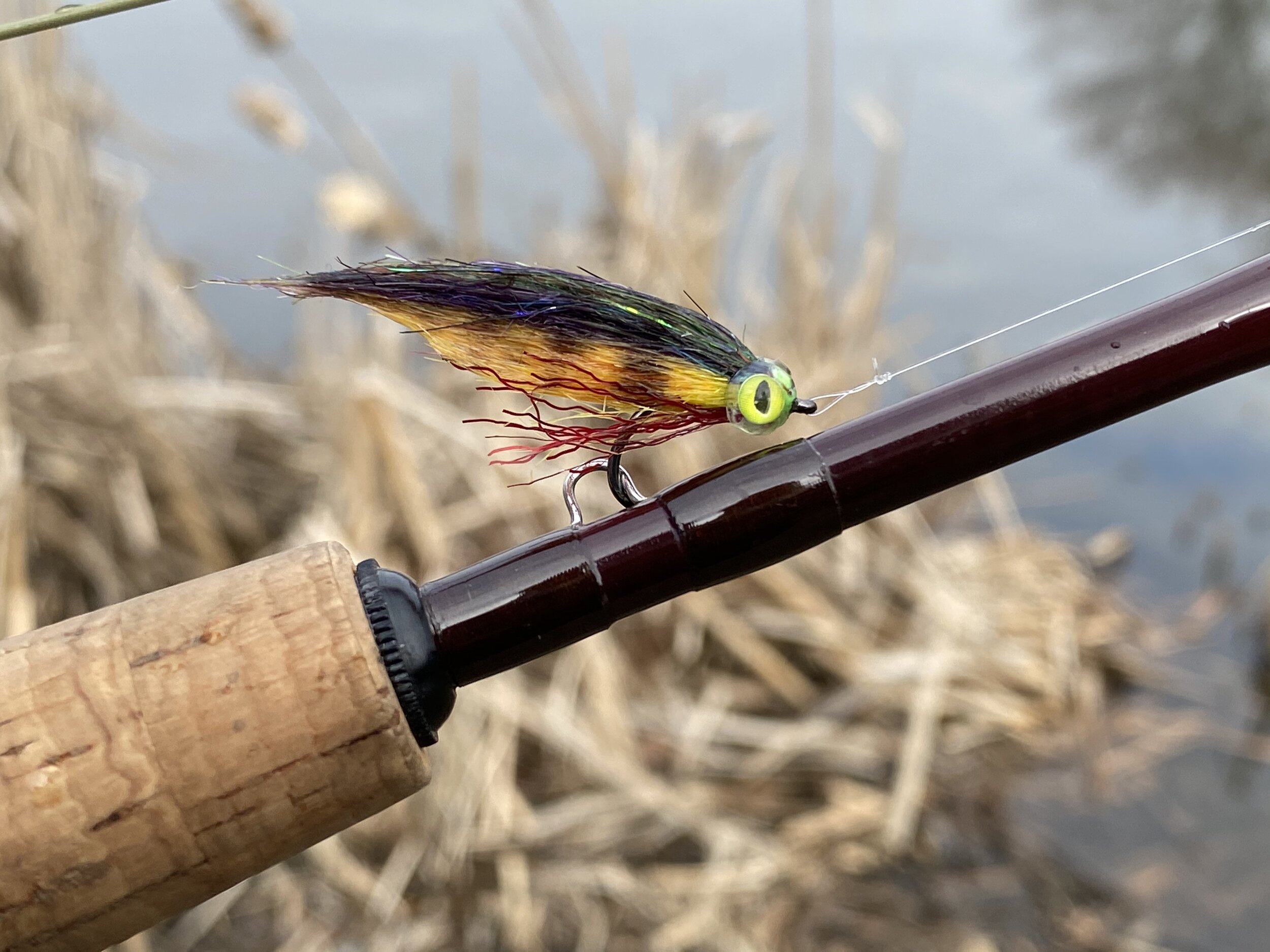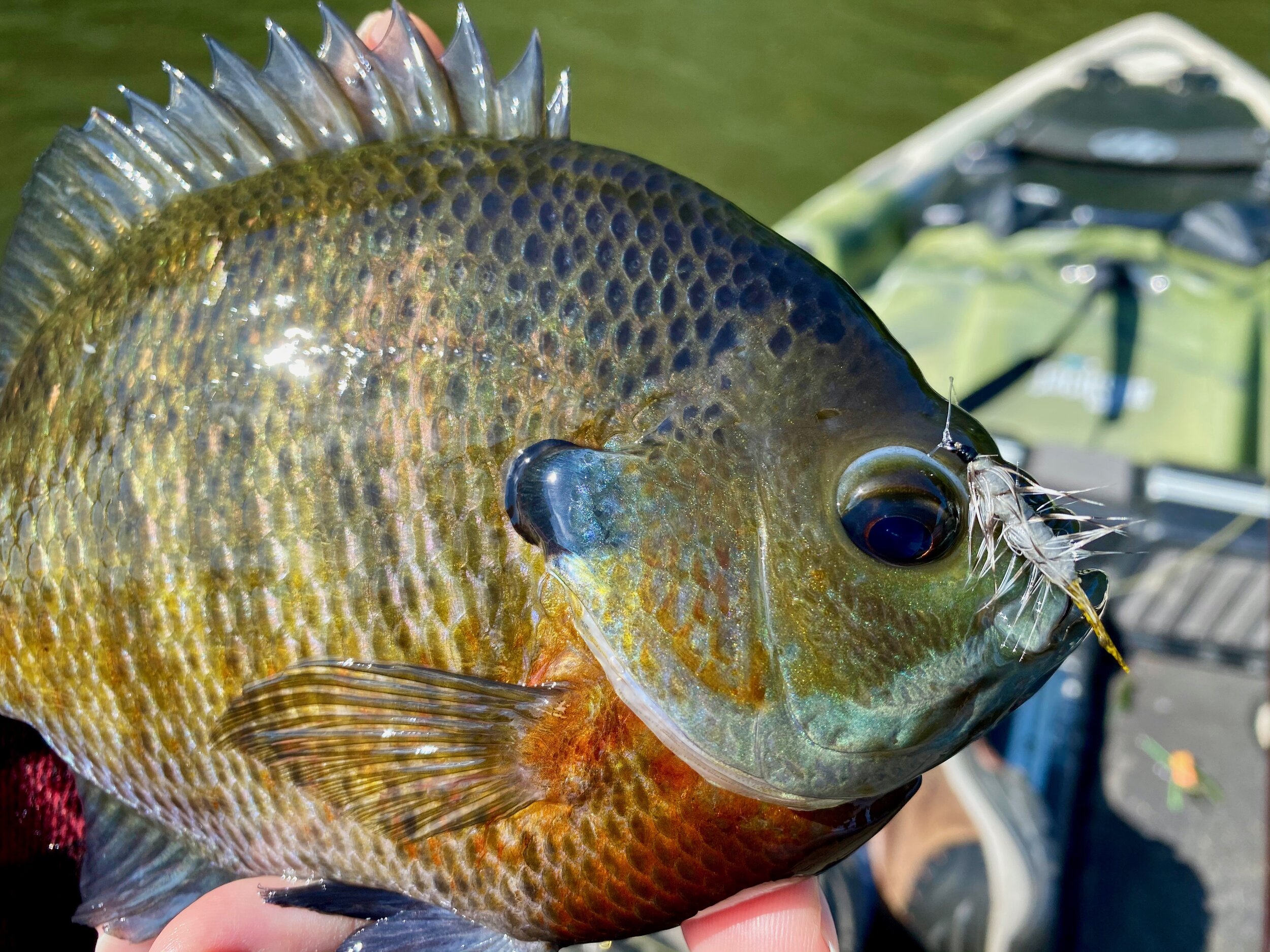I have partnered with artist Kari Townsdin to bring a special giveaway to the Panfish On The Fly audience!. Kari will be giving away a signed 12"x12" watercolor paper print of “Sunniest” (Value of $60). This fantastic painting really captures the essence of one of my favorite sunfish species, the Pumpkinseed.
Read moreThe Panfish Chicken Little
I am surprised how many steelhead patterns (with a little modification) find their way into my panfish fly boxes! One of my most productive warm water nymph patterns is my Panfish Wiggler. This pattern is a spin-off of the Spring Wiggler, a very popular steelhead pattern across the Great Leakes region.
Read moreTen Tips For Trophy Panfish This Summer
Summertime blues got you down? Grab that fly rob and chase some panfish!
I sometimes get criticized for my love of fly fishing for panfish. "Bluegills?" they ask, "why not fish for something a little more challenging?" Bluegills and other panfish are easy pickings in the springtime when they are on their spawning beds. That is how they get their reputation as being pushovers. Fly selection is not critical and sloppy presentations will often still yield results. Springtime doesn't last forever, and when the spawning season ends, trophy panfish can be just a challenging (and rewarding) as catching more glamorous species. While trophy-sized bluegills often let down their guard a bit when they are focused on keeping their bloodline going, they did not get that big by accident. Outside of the spawning season, big bluegills can be a challenging quarry to chase with a fly rod.
I know very few anglers who don't smile ear to ear when fighting big bluegill on a light fly rod. These scrappy fighters know how to use their saucer-shaped bodies to full advantage and don't seem ever to give up. So if you want to keep that three or four weight fly rod bent to the cork this summer, here is how to do it.
We all love to catch fish on top but when your fishing during the Dog Days of August you may have to go deep to catch them!
1. To Catch The You Have To Find Them - Go Deep
As the water warms and the shallows become chocked with weeds as the season progresses, larger bluegills seek deeper water. In deeper water, they find relief from the blazing sun, stable water conditions with colder water, and abundant food. The largest panfish spend most of there time in deeper water, only entering the shallows to spawn. Look for these fish on the outside edges of weed beds, transition areas (changes in bottom composition), and deep water structure such as creek beds, drop-offs, sunken timber, rock piles, and artificial fish reefs.
If topwater flies are not producing try subsurface patterns like small streamers. Using weighted flies, or intermediate /sinking fly lines will help you reach fish holding in deeper water.
2. You Can't Catch Them If You can't Reach Them
Targeting deep water panfish with a fly rod can be one of fly fishing's more difficult challenges. Getting your fly down to the fish and detecting the light hit of a bluegill inhaling your fly is no easy task. To make matters worse, fly line manufactures don't typically make sinking fly lines for the three and four weight rods we like to use for panfish. This is one of those times I will break out that five weight for fishing for panfish. You can find sink tip, intermediate, and full sinking lines for a five weight, and big panfish will still put a respectable bend in these stouter rods.
Here are a few tips for fishing deep water:
- Maintain a direct connection between you and the fly. Keep as much slack out of your line as possible - Keep your rod tip low to (or just under) the water's surface while retrieving the fly. By doing this, you will eliminate any excess slack line, and you will be able to detect strikes better.
- Watch your line like a hawk. Often you can detect the take of a fish by watching your line where it enters the water. Look for anything out of the ordinary and set the hook when you see something. You will be surprised how many times you end up hooking a fish despite the fact you never felt a thing. Practice this, and after a while, you will develop a "sixth sense" for visually detecting the take of a fish
- Practice casting sinking lines. Sink tips, intermediate and full sinking fly lines are cast differently from your standard weight forward or double taper fly line. Familiarize yourself with the differences in advance, so you are not flailing around on the water, trying to deliver your fly to the fish!
- Fish your subsurface patterns under an indicator. This common stream practice also works well in still water for presenting flies to fish holding in deeper water. Use a sliding indicator system to make casting easier when fishing deeper water.
3. Leave The Shoreline Behind
Unfortunately, to effectively fish deeper water, we need to get off the bank in many cases. Fishing from some type of watercraft will give you better access to fish-holding water. It does not have to be fancy; a float tube, canoe, kayak, or johnboat will get the job done.
4 - Better Fishing Through Technology
On more than one occasion, I have received snide remarks from other anglers when they observe the expensive fish finder mounted on my kayak, especially when I am fishing a tiny farm pond. That fish finder is overkill in that scenario, but that is not why it is on the boat. Its primary use is to locate deep water fish and structure on larger bodies of water. Electronics can take the guesswork out of finding fish and structure in deeper water.
A slow sinking wet fly is a deadly pattern for deep holding summertime panfish!
5. Slow Your Sink Rate
One of the benefits of fly fishing is the ability to present a bait to the fish naturally. In the natural world, the things that fish eat seldom plummet towards the bottom. A fly that slowly descends through the water column is much more attractive. Many times a fish will take a sinking fly. Most flies sink slowly, making them more appealing to the fish. If your heavily weighted flies are not doing the trick, fish a lightly weighted pattern that falls gradually. Slow down your presentation and watch that line for takes while the fly is sinking.
6. Pick The Right Time Of Day
In the dog days of summer, fish can be sluggish and reluctant to take a fly in the heat of the day. Concentrate your effects early and late in the day. Get on the water before dawn or fish during the last few hours of the day. The fish will be more active during these times of the day, and you may even get some surface activity if you want to give those poppers a workout. If you can’t up early or stay out late try and fish on cloudy days. The fish will be more active if they can find some relief from the blazing summer sun.
7. Try A Popper-Dropper Combo
We all like to fish topwater patterns for the exciting takes. Unless you are fishing early or late in the day, using a topwater fly may not be the best course of action. However, by suspending a subsurface fly like a nymph, wet fly, or small streamer beneath a topwater bug, you can present two options simultaneously. Suspending a fly beneath a surface pattern allows you to fish effectively over subsurface weed beds with fouling your flies in the vegetation on every cast. Strike detection is also easier since you have an "indicator" floating above your subsurface fly.
During the summer weeds can grow right up to the surface can making fishing difficult. Fishes the edges of and pockets with these weed beds.
8. Get Down In The Weeds
Subsurface weed beds, especially the edges, are prime big bluegill habitat. Fish these areas with nymphs, wets, and small streamers. Try popper/dropper combos or fish under an indicator to present your flies just above the vegetation. Try fishing floating dragonfly nymph on a long leader with a sinking line. The fly swimming just above the weeds is irresistible to big panfish.
If your having trouble connecting with fish on large bodies of water try fishing something smaller. Chances are there is a small lake or pond close by!
9. Try New Waters
If you have trouble locating big panfish on large lakes and reservoirs, try fishing smaller lakes and ponds. In comparison, the fish will still be occupying deep water, but that deep water may only be 4 -8 feet deep in a pond opposed to 20-30 feet deep in a larger body of water. Fish in these smaller bodies of water will be much easier to target with a fly rod. With fewer places to hide you will locate fish quicker.
That is the head of a size 6 James Wood Bucktail in the mouth of this chunky bluegill! Big bluegills have no problem with size 6 or even larger flies!
10. Go Big Or Go Home
Try fishing larger flies. A large panfish will have no problem eating a size six fly. I often catch big bluegills when fishing for bass on size four flies, sometimes as large as six! Many of the prey items panfish rely on for food are larger at this time of year. This includes dragonfly and damselfly larva, leeches, crayfish, and young fish and minnows. Large nymphs and wet flies, as well as small streamers, will produce the largest panfish. As a bonus, these flies also attract the attention of larger predators like bass.
Do you have a tip for summertime panfish on the fly? We'd love to hear it. Leave a comment below!
Did you know we have an online store?
Baby Bluegill Streamers for Big Panfish!
Big panfish cannot resist the Baby Bluegill Streamer!
Every year when spring rolls around, a ritual repeats itself underwater on lakes and ponds everywhere. Big male bluegills emerge from the depths and enter the shallows. They are fish on a mission, and that mission is to build a nest, attract a mate and defend that nest, and it's young to the bitter end.
Read moreA classic panfish fly with an unusual name - Tom Nixon's .56%er
Tom Nixon’s .56%er may have an unusual name but the fish don’t seem to care!
I recently reread Tom Nixon's Fly Tying and Fly Fishing for Bass and Panfish. I remember taking this book out from the library when I was a boy in the 1970s. I was just getting interested in fly tying, and this was one of the first books I attempted to read on the subject. I say "attempted" because, like most fly tying books of that era, they contained vague instructions and horrible line drawings that were supposed to clarify the techniques described. I returned the book with a sense of being more confused than ever. Fast forward to the present day with forty years of fly tying looking at me in the rearview mirror; I breezed through the book in a couple of evenings. What mystified the ten-year-old boy made perfect sense to me now.
Read more
